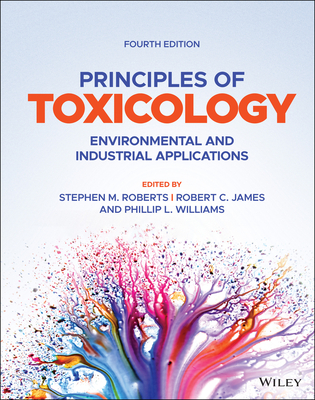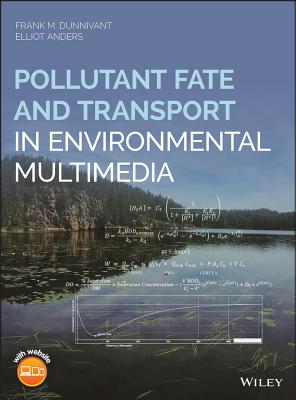相關主題
商品描述
Description
A practical workbook that bridges the gap between theory and practice in the nanotechnology field
Because nanosized particles possess unique properties, nanotechnology is rapidly becoming a major interest in engineering and science. Nanotechnology: Basic Calculations for Engineers and Scientists—a logical follow-up to the author's previous text, Nanotechnology: Environmental Implications and Solutions—presents a practical overview of nanotechnology in a unique workbook format.
The author has developed nearly 300 problems that provide a clear understanding of this growing field in four distinct areas of study:
- Chemistry fundamentals and principles
- Particle technology
- Applications
- Environmental concerns
These problems have been carefully chosen to address the most important basic concepts, issues, and applications within each area, including such topics as patent evaluation, toxicology, particle dynamics, ventilation, risk assessment, and manufacturing. An introduction to quantum mechanics is also included in the Appendix. These stand-alone problems follow an orderly and logical progression designed to develop the reader's technical understanding.
"This is certain to become the pacesetter in the field, a text to benefit both students of all technical disciplines and practicing engineers and researchers."
—Dr. Howard Beim, Professor of Chemistry, U.S. Merchant Marine Academy"Dr. Theodore has covered most of the important nanotechnology subject matter in this ...work through simple, easy-to-follow problems."
—John McKenna, President and CEO, ETS, Inc.
Table of Contents
Preface.
Introduction.
PART 1: CHEMISTRY FUNDAMENTALS AND PRINCIPLES.
1. Units, Conversion Constants and Dimensional Analysis.
2. Atoms, Elements, and the Periodic Table.
3. Molecular Rearrangements.
4. Concentration Terms.
5. Particle Size, Suface Area, and Volume.
6. Materials Sceince Principles.
7. Physical and Chemical Property Estimation.
References Part 1.
PART 2: PARTICLE TECHNOLOGY.
8. Nature of Particles.
9. Particle Size Distribution.
10. Particle Sizing and Measurement Methods.
11. Fluid Particle Dynamics.
12. Particle Collection Mechanisms.
13. Particle Collection Efficiency.
References: Part 2.
PART 3: APPLICATIONS.
14. Legal Consideration.
15. Size Reduction.
16. Prime Materials.
17. Production/Manufacturing Routes.
18. Ventilation.
19. Dispersion Considerations.
20. Ethics.
References: Part 3.
PART 4: ENVIRONMENTAL CONCERNS.
21. Environmental Regulations.
22. Toxicology.
23. Noncarcinogens.
24. Carcinogens.
25. Health Risk Assessment.
26. Hazard Risk Assessment.
27. Epidemiology.
References: Part 4.
Appendix: Quantum Mechanics.
Index.
商品描述(中文翻譯)
**描述**
一本實用的工作手冊,彌補了納米技術領域理論與實踐之間的差距。
由於納米尺寸的顆粒具有獨特的性質,納米技術正迅速成為工程和科學中的一個主要興趣。納米技術:工程師和科學家的基本計算——是作者之前著作《納米技術:環境影響與解決方案》的邏輯延續——以獨特的工作手冊格式提供了納米技術的實用概述。
作者已經開發了近300個問題,這些問題清晰地理解了這一不斷增長的領域,涵蓋四個不同的研究領域:
- 化學基本原理
- 顆粒技術
- 應用
- 環境問題
這些問題經過精心挑選,以解決每個領域內最重要的基本概念、問題和應用,包括專利評估、毒理學、顆粒動力學、通風、風險評估和製造等主題。附錄中還包括量子力學的介紹。這些獨立的問題遵循有序且合邏輯的進展,旨在增進讀者的技術理解。
“這肯定會成為該領域的領跑者,對所有技術學科的學生以及在職工程師和研究人員都有益。”
——霍華德·貝姆博士,美國商船學院化學教授
“西奧多博士通過簡單易懂的問題涵蓋了大多數重要的納米技術主題。”
——約翰·麥肯納,ETS, Inc.總裁兼首席執行官
---
**目錄**
前言。
介紹。
第一部分:化學基本原理。
1. 單位、轉換常數和維度分析。
2. 原子、元素和週期表。
3. 分子重排。
4. 濃度術語。
5. 顆粒大小、表面積和體積。
6. 材料科學原理。
7. 物理和化學性質估算。
參考文獻 第一部分。
第二部分:顆粒技術。
8. 顆粒的性質。
9. 顆粒大小分佈。
10. 顆粒大小測量方法。
11. 流體顆粒動力學。
12. 顆粒收集機制。
13. 顆粒收集效率。
參考文獻:第二部分。
第三部分:應用。
14. 法律考量。
15. 大小減少。
16. 主要材料。
17. 生產/製造路徑。
18. 通風。
19. 分散考量。
20. 倫理。
參考文獻:第三部分。
第四部分:環境問題。
21. 環境法規。
22. 毒理學。
23. 非致癌物。
24. 致癌物。
25. 健康風險評估。
26. 危害風險評估。
27. 流行病學。
參考文獻:第四部分。
附錄:量子力學。
索引。












